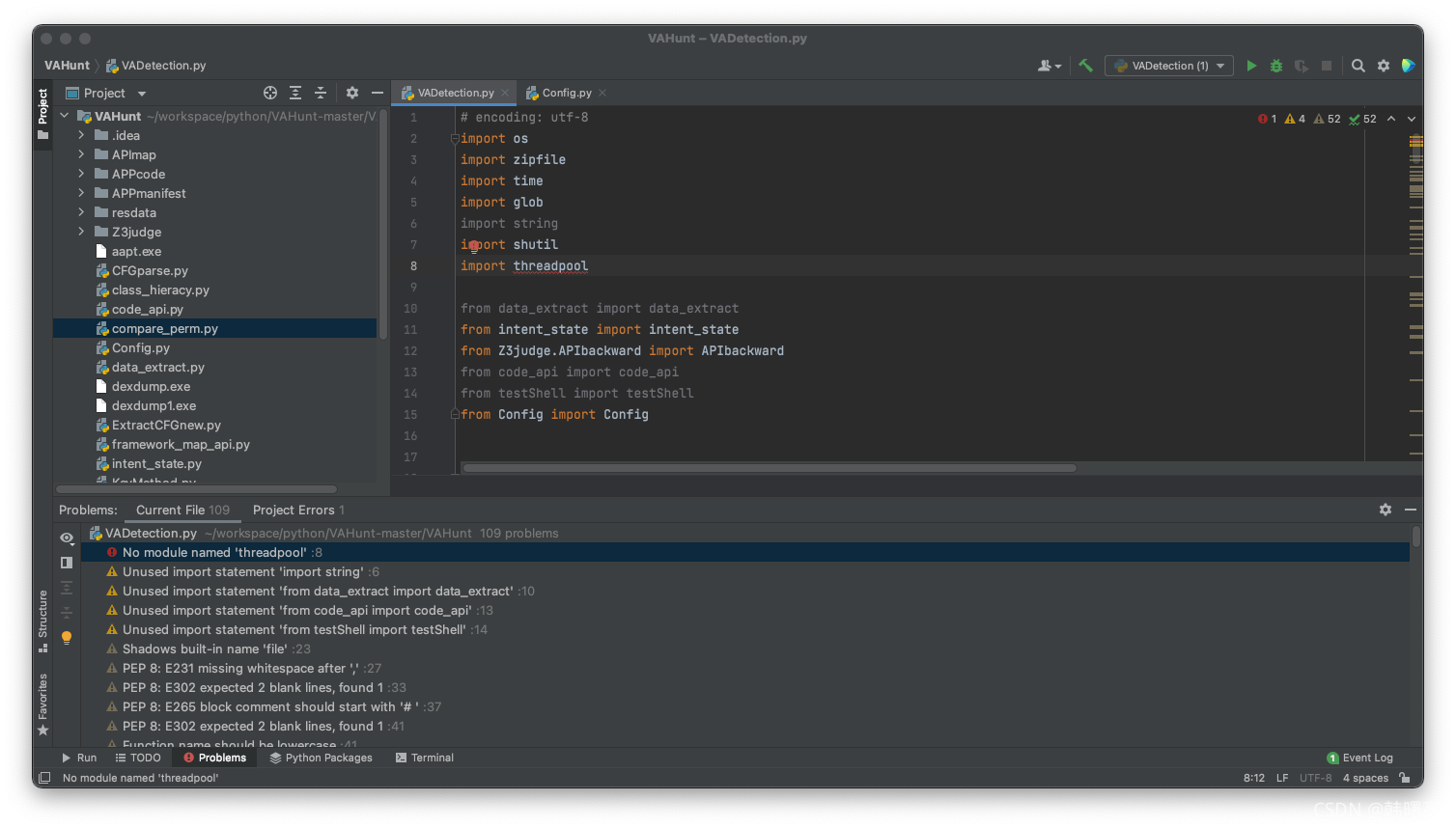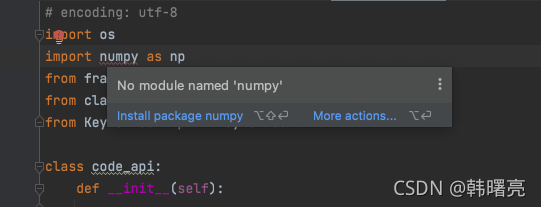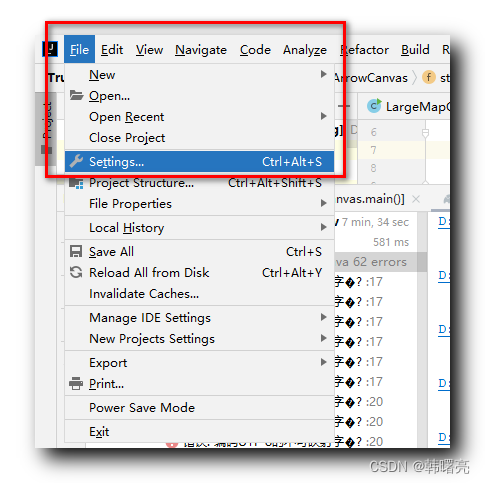创建一个将侦听电报频道的应用程序
首先,请注意,,这与创建bot无关。
我的目标是创建一个应用程序,该应用程序将简单地侦听我将提供给它的帐户订阅的任意数量的电报通道,并检索发送到这些频道的所有消息(就像我是一个普通用户)。我猜我需要
- 用我帐户的电话号码来验证我自己
- 能够为所有传入消息设置每个通道的回调侦听器或通用侦听器。
我已经在telegram api上看了几天了,我对它的工作方式感到非常困惑。在放弃了它之后,我开始研究现成的实现,主要是针对NodeJS的,但仍然无法找到具体的解决方案。我正在用电报-js api测试一些东西,但是直接使用node运行它是行不通的。它需要在浏览器中运行吗?这方面是否有更精简的方法?最好是有好文件的东西。
PS:我精通Java和Javascript,所以我已经根据这些语言对库进行了排序。
编辑:
下面是我编写的代码(实质上是复制了一个示例)
var { Telegram } = require("../libs/telegram");
var TypeLanguage = require("telegram-tl-node") ;
var MTProto = require("telegram-mt-node");
var schema = require("../libs/api-schema.json");
const APP_ID = "111111";
const APP_HASH = "fb6da8f6abdf876abd6a9d7bf6";
const SERVER = { host: "111.111.111.11", port: "443" };
const config = {
id: APP_ID,
hash: APP_HASH,
version: '0.0.1',
lang_code: 'en',
authKey: null
};
let telegram = new Telegram(MTProto, TypeLanguage);
telegram.useSchema(schema);
addPublicKeys(telegram);
let connection = new MTProto.net.HttpConnection(SERVER);
let client = telegram.createClient();
client.setConnection(connection);
connection.connect(function() {
let ready = client.setup(config);
ready.then(function(client) {
// it never resolves this promise
function callback(response) {
console.log(response);
}
client.callApi("help.getConfig").then(callback, callback);
});
});回答 4
Stack Overflow用户
发布于 2020-06-13 09:36:23
迟答,但可能对他人有帮助。
您可以利用mtproto核使用常规电报帐户进行身份验证,并收听更新(或者对电报客户做任何您能做的事情,真的)
下面是我编写的一个示例脚本,它侦听来自用户订阅的通道/超级组的新消息:
const { MTProto, getSRPParams } = require('@mtproto/core');
const prompts = require('prompts');
const api_id = ...; // insert api_id here
const api_hash = ' ... '; // insert api_hash here
async function getPhone() {
return (await prompts({
type: 'text',
name: 'phone',
message: 'Enter your phone number:'
})).phone
}
async function getCode() {
// you can implement your code fetching strategy here
return (await prompts({
type: 'text',
name: 'code',
message: 'Enter the code sent:',
})).code
}
async function getPassword() {
return (await prompts({
type: 'text',
name: 'password',
message: 'Enter Password:',
})).password
}
const mtproto = new MTProto({
api_id,
api_hash,
});
function startListener() {
console.log('[+] starting listener')
mtproto.updates.on('updates', ({ updates }) => {
const newChannelMessages = updates.filter((update) => update._ === 'updateNewChannelMessage').map(({ message }) => message) // filter `updateNewChannelMessage` types only and extract the 'message' object
for (const message of newChannelMessages) {
// printing new channel messages
console.log(`[${message.to_id.channel_id}] ${message.message}`)
}
});
}
// checking authentication status
mtproto
.call('users.getFullUser', {
id: {
_: 'inputUserSelf',
},
})
.then(startListener) // means the user is logged in -> so start the listener
.catch(async error => {
// The user is not logged in
console.log('[+] You must log in')
const phone_number = await getPhone()
mtproto.call('auth.sendCode', {
phone_number: phone_number,
settings: {
_: 'codeSettings',
},
})
.catch(error => {
if (error.error_message.includes('_MIGRATE_')) {
const [type, nextDcId] = error.error_message.split('_MIGRATE_');
mtproto.setDefaultDc(+nextDcId);
return sendCode(phone_number);
}
})
.then(async result => {
return mtproto.call('auth.signIn', {
phone_code: await getCode(),
phone_number: phone_number,
phone_code_hash: result.phone_code_hash,
});
})
.catch(error => {
if (error.error_message === 'SESSION_PASSWORD_NEEDED') {
return mtproto.call('account.getPassword').then(async result => {
const { srp_id, current_algo, srp_B } = result;
const { salt1, salt2, g, p } = current_algo;
const { A, M1 } = await getSRPParams({
g,
p,
salt1,
salt2,
gB: srp_B,
password: await getPassword(),
});
return mtproto.call('auth.checkPassword', {
password: {
_: 'inputCheckPasswordSRP',
srp_id,
A,
M1,
},
});
});
}
})
.then(result => {
console.log('[+] successfully authenticated');
// start listener since the user has logged in now
startListener()
});
})您可以从api_id和api_hash中找到https://my.telegram.org的值。
在第一次运行时,脚本提示用户输入phone_number、代码和密码。
[+] You must log in
√ Enter your phone number: ... <phone_number>
√ Enter the code sent: ... <code>
√ Enter Password: ... <2FA password>在身份验证结束后,运行一个示例输出:
[+] starting listener
[13820XXXXX] Ja
[13820XXXXX] Bis bald guys��
[13820XXXXX] Ja. �
[13820XXXXX] Bis später
[13820XXXXX] Jaaa�我检查身份验证状态的方式是从这里开始。
Stack Overflow用户
发布于 2022-01-31 16:26:26
import { TelegramClient } from 'telegram'
TelegramClient().addEventHandler(handler, { chats: [1234567890] })机器人不需要成为您想要收听的频道的成员。
我的代码作为Node.js应用程序运行。
您需要首先通过电报与https://t.me/BotFather交谈来创建令牌。
Stack Overflow用户
发布于 2022-10-01 11:34:11
这里是我使用语法的工作代码,它完全在nodejs上。没有任何延迟地从所有频道接收所有的消息。
import {
TelegramClient
} from "telegram";
import {
NewMessage,
NewMessageEvent
} from "telegram/events";
import {
StringSession
} from "telegram/sessions";
const input = require("input");
const apiId = 1233456677;
const apiHash = "xxxxxxxxxxxxxxxxx";
let stringSession = new StringSession("xxxxxxxxxxxxxxxxx");
(async() => {
console.log("Loading interactive example...");
const client = new TelegramClient(stringSession, apiId, apiHash, {
connectionRetries: 5,
});
await client.start({
phoneNumber: async() => await input.text("Please enter your number: "),
password: async() => await input.text("Please enter your password: "),
phoneCode: async() =>
await input.text("Please enter the code you received: "),
onError: (err) => console.log(err),
});
console.log("You should now be connected.");
const session: any = client.session.save();
stringSession = new StringSession(session); // Save this string to avoid logging in again - specially in nodemon
console.log(client.session.save()); // --> you can also copy this session from your console once you get it and paste it in line number 8 - new StringSession("XXXXXXXXXXXXXX")
// once you saved add the JWT Token on line no. 8 as mention above next time you will getting directly connected.
await client.sendMessage("me", {
message: "Hello!"
});
async function handler(event: NewMessageEvent) {
console.log("[newmessage]", event);
}
client.addEventHandler(handler, new NewMessage({}));
})();
备注-忽略了“运行代码片段”,因为这是添加完整代码而不是格式化的最佳方法。
https://stackoverflow.com/questions/47809485
复制















